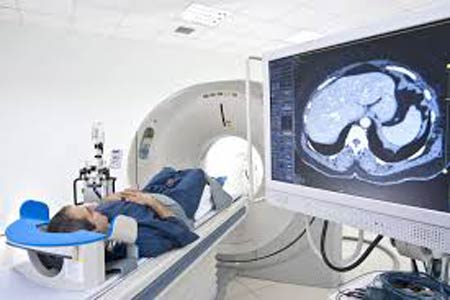- +91-8624883983
- info@insightsmicro.com
Medical Imaging : Global Trends, Facts and Figures

Modern medicine widely accepts the concept of medical imaging. It is also offered in the context of the rise in the importance of prevention and health care as delays in making a diagnosis are more frequent and tumor stages become more advanced. The medical imaging markets, or the markets for the equipment that helps in the diagnosis of various body parts, are increasing with an increase in urbanization, improved technology, and an aged society. The engine for the formal market is being pushed forward by scientific advances like AI (artificial intelligence), machine learning, and three-dimensional image processing that go hand in hand with development in Schenectady. nectady.
In 2024, the market addressing medical imaging is predicted to rise from the base year of exactly $50 billion to a value of $70 billion in the year of 2030, therefore approving the systems to achieve an annual average growth rate of approximately 5%. The North The North AmThe American region, with its extensive and well-developed healthcare system, is considered one of the leading markets for medical imaging, while the Asia-Pacific region, in particular, is experiencing dynamic growth due to escalating healthcare spending levels and increasing availability of medical services.
Global Medical Imaging Industry
Overview
Modern medicine widely accepts the concept of medical imaging. It is also offered in the context of the rise in the importance of prevention and health care as delays in making a diagnosis are more frequent and tumor stages become more advanced. The medical imaging markets, or the markets for the equipment that helps in the diagnosis of various body parts, are increasing with an increase in urbanization, improved technology, and an aged society. The engine for the formal market is being pushed forward by scientific advances like AI (artificial intelligence), machine learning, and three-dimensional image processing that go hand in hand with development in Schenectady. nectady.
In 2024, the market addressing medical imaging is predicted to rise from the base year of exactly $50 billion to a value of $70 billion in the year of 2030, therefore approving the systems to achieve an annual average growth rate of approximately 5%. The North The North AmThe American region, with its extensive and well-developed healthcare system, is considered one of the leading markets for medical imaging, while the Asia-Pacific region, in particular, is experiencing dynamic growth due to escalating healthcare spending levels and increasing availability of medical services.

Types & Definition
When it comes to medical imaging, the term defines techniques and processes used for the creation of images of the interior of the body, which are utilized for the purpose of clinical analysis and medical intervention. These types of technologies allow health practitioners to confirm a suspected pathology, guide interventional procedures, treat the patients, and assess patient responses to the treatment regimens.
1. X-ray Imaging: Most often used to find broken bones, infections, and lung-related diseases.
2. Computed Tomography (CT): provides cross-sectional views of the body.
3. Magnetic Resonance Imaging (MRI): It uses magnets and radio waves to provide images of the soft tissues.
4. Ultrasound: Uses sound waves to produce images in motion, most used in pregnancy and cardiology.
5. Nuclear Medicine (PET/SPECT): Employs the use of radioactive substances to diagnose illnesses.
6. Mammography: An X-ray type specifically used to stimulate the breast tissue for cancer screening.
Industry Trends
1. diagnosis more accurate and efficient.
2. Advent of 3D and 4D Imaging: Enabling improved visuals to assist with surgical planning.
3. Evolution of Teleradiology: Enabling diagnoses and consultations from a distance.
4. Increasing Use of Mobile and Wearable Imaging Equipment: Greatly enhancing services for rural communities.
5. Targeted therapy and high-resolution imaging: Aiding in the customization of care.
Facts & Insights
Use of artificial intelligence in medical imaging has a more than 35% CAGR growth forecast.
AI introduced in the process of imaging assists with rapid and thorough diagnostic results.
Portable devices used for diagnostics at the point of care are among recent advancements.
The trend of cloud storage for medical scans has increased the response time to the images' requests.
Minimally invasive measures are boosting the enhancement of MD imaging.
Market Segment
1. Based on Alteration
X-ray Imaging
Magnetic Resonance Imaging (MRI)
Computed Tomography (CT)
Ultrasonography
Radioactive imaging
2. By Purpose
Cardiovascular system
Neuroscience
Cancer
Musculoskeletal system
Reproductive system
3. According to Where the Devices Are Used
General Hospitals
Centers for Imaging Diagnostics
Research Centers
Specific Care Clinics
Industry Leader
1. GE Healthcare: medically advanced imaging devices to global markets.
2. Siemens Healthineers: Market leaders in imaging and other AI-driven diagnostic tools.
3. Philips Healthcare: A specialized firm that designed and implemented solutions for imaging and healthcare.
4. Canon Medical Systems: Very strong in ultrasound and CT imaging product line.
5. Fujifilm Holdings: Known for digital x-ray imaging and AI applications.
6. Hologic, Inc.: specializing in imaging women.